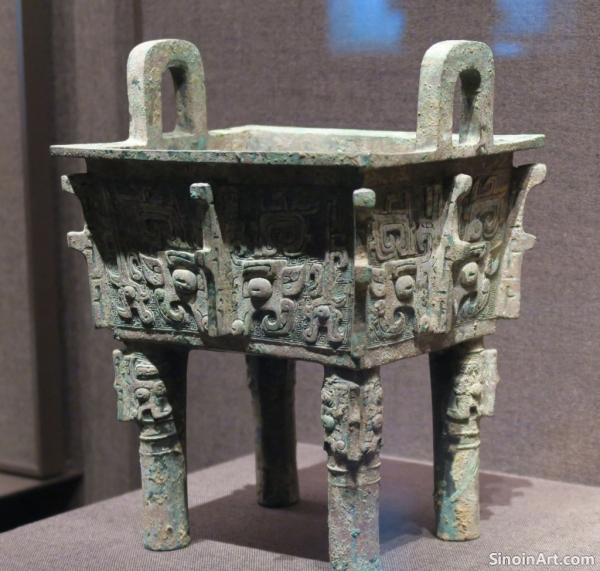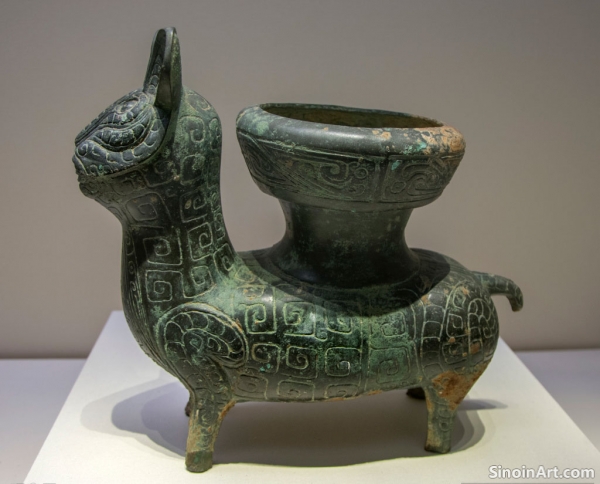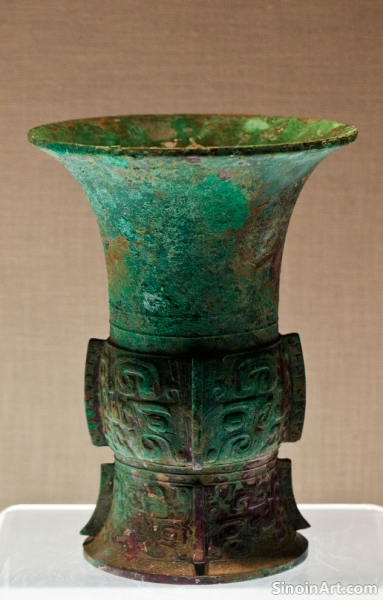Regional Variations in Chinese Bronze Ware: Exploring Cultural Diversity
|
While a common style of bronze casting existed in ancient China, regional variations in forms, designs, and casting techniques demonstrate the cultural diversity of the time. Different regions developed their unique approaches to bronze production, reflecting local traditions and beliefs. Regional variations are an important element in the study of Chinese bronzes.  In the Central Plains region, the heartland of the Shang and Zhou dynasties, bronze ware was often characterized by intricate designs, precise craftsmanship, and a strong emphasis on ritual and ancestral worship. The styles and forms used in the Central Plains area are an ideal starting point for understanding the broader styles of the era. The styles of the central plains helped to set the standard for other regions.  In the southern regions of China, different traditions, such as those of the Chu Kingdom, developed bronze styles that often combined elements of both the central Chinese tradition with local aesthetic preferences. The combination of local styles and Chinese styles helped to create unique and distinctive regional variations.  In the northern regions of China, styles of bronze were often influenced by nomadic groups, with designs and shapes reflecting the cultures of the steppe. The cross-cultural interactions helped to influence both style and the materials used in the bronze. This also led to distinctive regional variations in how bronze was employed. The study of regional variations in Chinese bronze ware allows us to gain a deeper appreciation for the complex cultural landscape of ancient China. The unique and varied approaches to the craft help to highlight the diversity of the region. The regional styles show a wide range of artistic styles, reflecting different cultures of the era. |
Tag : regional bronze ware, Chinese bronze styles, Chu culture, ancient China, bronze art
Related information
- The Preservation of Inscribed Bronzes: Understanding the Text and History
- The Use of Bronze in Ancient Chinese Astronomical Observatories: Instruments and Knowledge
- The Influence of Nomadic Cultures on Chinese Bronze Ware: Cross-Cultural Exchanges
- The Use of Bronze in Ancient Chinese Transportation: Bridges, Road Components, and Infrastructure
- Beyond Bronze: Other Materials Used in Conjunction with Bronze Ware
This article focuses on the preservation of inscribed bronze ware, highlighting the importance of protecting both the objects and their historical texts, detailing the techniques used for conservation and analysis, and emphasizing the ongoing academic work to interpret the inscriptions.
This article explores the use of bronze in ancient Chinese astronomical observatories, highlighting the creation of sighting devices, armillary spheres, and other instruments, and demonstrating how these objects facilitated astronomical observation and knowledge.
This article explores the influence of nomadic cultures on Chinese bronze ware, highlighting the adoption of new forms, styles, and techniques, the influence of animal motifs, and the role of trade and diplomacy in the transmission of cultural ideas.
This article explores the use of bronze in ancient Chinese transportation infrastructure, highlighting its role in the creation of bridges, road supports, measuring tools, and other components, and demonstrating its importance in large-scale engineering projects.
This article explores the materials used in conjunction with bronze ware in ancient China, highlighting the use of jade, bone, shell, and wood to create more complex and multifaceted objects, showcasing the versatility of ancient craftsmanship.